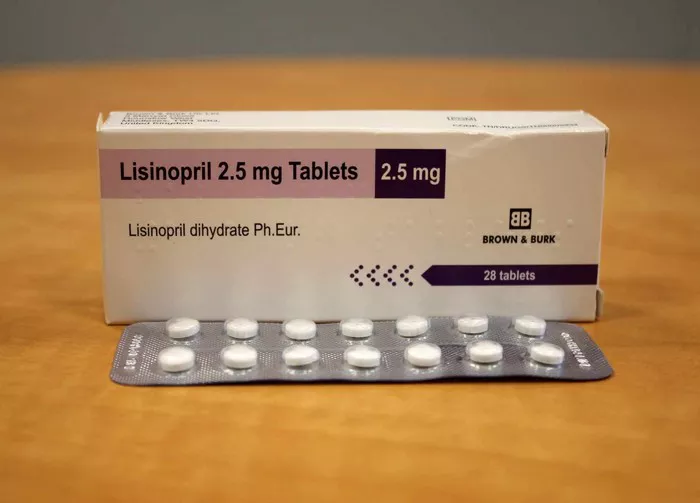Lisinopril is a commonly prescribed medication used to treat high blood pressure (hypertension) and heart failure. It belongs to a class of drugs known as ACE inhibitors (Angiotensin-Converting Enzyme inhibitors), which work by relaxing blood vessels and improving blood flow. Taking lisinopril at the right time can optimize its effectiveness and minimize potential side effects. In this article, we will explore the best time to take lisinopril, considerations for different patient groups, and important factors to keep in mind when using this medication.
Understanding Lisinopril and Its Benefits
Before delving into the timing of lisinopril administration, let’s first understand how this medication works and its benefits. Lisinopril helps lower blood pressure by inhibiting the production of angiotensin II, a substance that narrows blood vessels and increases blood pressure. By blocking the action of angiotensin II, lisinopril helps blood vessels relax and dilate, allowing blood to flow more freely and reducing the workload on the heart.
The primary benefits of lisinopril include:
1. Blood Pressure Control: Lisinopril is effective in lowering blood pressure, which is crucial for managing hypertension and reducing the risk of cardiovascular complications such as heart attacks and strokes.
2. Heart Failure Management: For patients with heart failure, lisinopril can improve heart function and symptoms such as shortness of breath and fatigue.
3. Kidney Protection: Lisinopril may also offer kidney protection, particularly in patients with diabetes or kidney disease, by reducing pressure in the kidneys’ blood vessels.
Given these benefits, it is essential to take lisinopril as prescribed to maximize its therapeutic effects.
Factors Influencing the Timing of Lisinopril Administration
The timing of lisinopril intake can impact its effectiveness and tolerability. Several factors influence when is the best time to take lisinopril:
1. Dosage Frequency: Lisinopril is typically taken once daily. However, some patients may require a higher dose or split doses throughout the day. The timing of administration may vary based on the prescribed dosage regimen.
2. Blood Pressure Control: For patients with hypertension, taking lisinopril at the optimal time can help maintain consistent blood pressure control throughout the day, reducing the risk of blood pressure fluctuations.
3. Side Effects: Lisinopril can cause side effects such as dizziness, especially when starting the medication or changing the dosage. Taking it at the right time may help minimize these side effects.
4. Interactions with Food: While lisinopril can be taken with or without food, certain foods, especially those high in potassium, may interact with the medication. Considering meal times can be important for some patients.
5. Patient Preferences: Some patients may prefer taking lisinopril in the morning or evening based on their daily routine and lifestyle.
Best Time to Take Lisinopril: Morning vs. Evening
The optimal time to take lisinopril—morning or evening—has been a topic of debate among healthcare professionals. Both morning and evening dosing have their potential advantages and considerations:
Morning Dosing:
1. Blood Pressure Control: Taking lisinopril in the morning may align with the body’s natural circadian rhythm, as blood pressure tends to be higher in the morning. This timing can help achieve optimal blood pressure control during the day.
2. Adherence: Morning dosing may be more convenient for some patients, as they can incorporate it into their morning routine or take it alongside other morning medications.
3. Side Effects: By taking lisinopril in the morning, patients can monitor any potential side effects throughout the day and address them promptly.
Evening Dosing:
1. Blood Pressure Reduction During Sleep: Some studies suggest that taking lisinopril in the evening may result in better blood pressure reduction during sleep, which is important for overall cardiovascular health.
2. Side Effects: Taking lisinopril in the evening allows patients to experience any initial side effects while they are at home and can rest if needed.
3. Convenience: Evening dosing may be more convenient for individuals who prefer to take medications before bedtime or have a busy morning schedule.
Considerations for Special Patient Groups
Certain patient groups may benefit from specific timing considerations when taking lisinopril:
1. Elderly Patients: Older adults may experience orthostatic hypotension (a sudden drop in blood pressure when standing up) as a side effect of lisinopril. Taking the medication in the evening can reduce the risk of this side effect affecting daily activities.
2. Diabetic Patients: Patients with diabetes should coordinate lisinopril administration with meal times to avoid potential interactions with food and monitor blood glucose levels closely.
3. Patients with Kidney Disease: Individuals with kidney disease may require adjusted dosages and timing of lisinopril to optimize kidney protection while avoiding excessive potassium buildup.
Individualized Approach and Consultation with Healthcare Providers
Ultimately, the best time to take lisinopril may vary for each patient based on their specific medical condition, lifestyle, and preferences. It is crucial for patients to follow their healthcare provider’s recommendations regarding dosage and timing of lisinopril administration. Healthcare providers consider various factors when prescribing lisinopril, including:
Patient’s overall health status
- Concurrent medications and potential drug interactions
- Response to lisinopril therapy and blood pressure monitoring
- Patients should also communicate any concerns or difficulties with lisinopril administration to their healthcare providers. Adjustments in dosage or timing may be necessary to ensure optimal treatment outcomes and minimize side effects.
Conclusion
In conclusion, the best time to take lisinopril depends on individual factors such as dosage regimen, blood pressure control goals, side effect management, and patient preferences. Both morning and evening dosing can be effective, and healthcare providers tailor the timing of lisinopril administration to each patient’s needs. By following healthcare provider recommendations and maintaining open communication, patients can maximize the benefits of lisinopril therapy for managing hypertension, heart failure, and other cardiovascular conditions.

